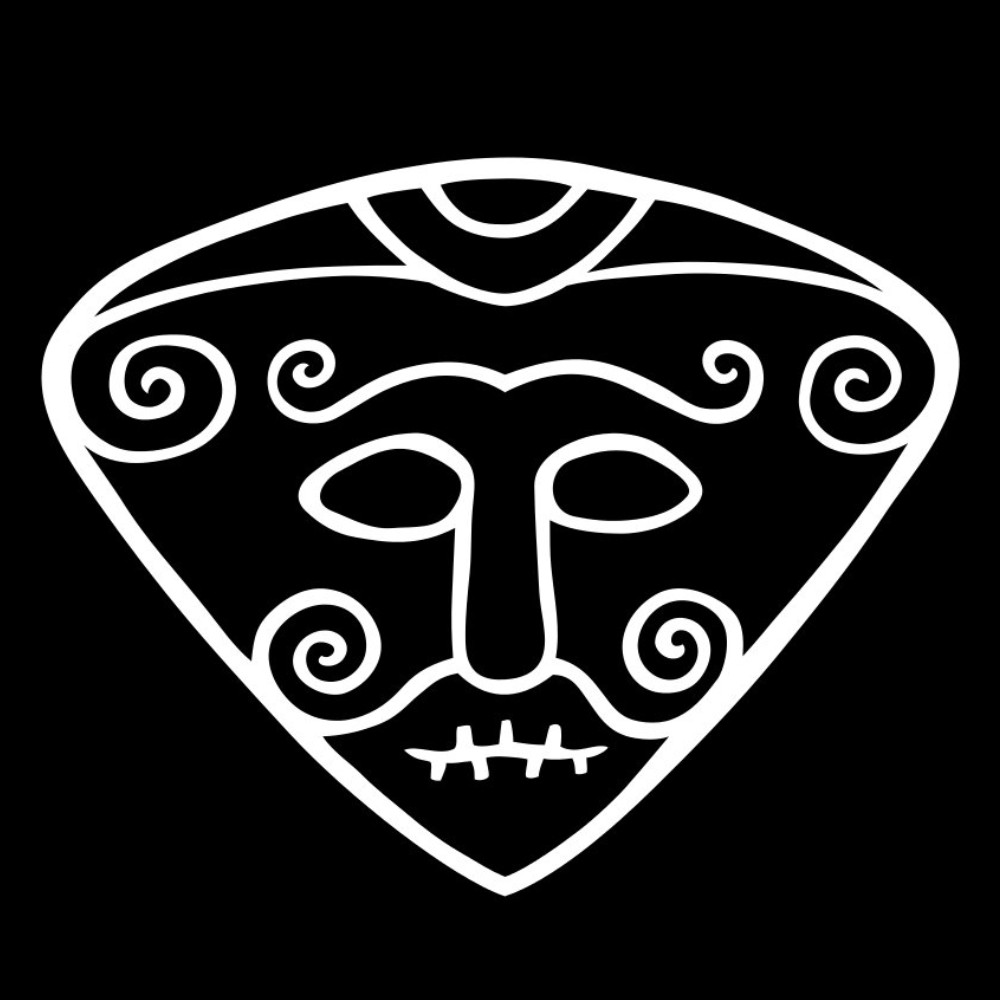

Oh no! Somebody organized to further the interests of the free and open internet, and they didn’t invite me even though I was active on some IRC channel in 1995!
Cry me a fucking river.
Just passing through.


Oh no! Somebody organized to further the interests of the free and open internet, and they didn’t invite me even though I was active on some IRC channel in 1995!
Cry me a fucking river.


Some background, explaining why this brutalist sculpture was made quite recently, and why it matters:
During the war in Norway, the organized resistance against the Nazis generally took one of three forms.
One was organized in Britain. Norwegians would generally flee to Sweden, make their way from Sweden to the UK, receive training in the UK, and come back to Norway to do military missions. The heavy water sabotage is the most famous achievement of Norwegians together with British intelligence, but they did a lot of operations. Milorg was a central group here. Keep in mind that organized in Britain does not necessarily mean British, as our legitimate government was in exile in Britain at the time. Milorg had ties both to the Norwegian government and to the British army.
The other was the Norwegian merchant sailors: More than 30 000 Norwegian sailors (some sources say around 100 000) contributed to the Allied effort transporting military supplies along with civilian goods, making them the target of frequent attacks by the Germans. When coastal cities in the US were asked to keep the lights off so that the silhouettes of ships would not be visible, that was largely for Norwegian merchant ships. Both Churchill and Roosevelt highlighted the importance of the merchant sailors after the war, and already in 1942 the British admiral Gerald Charles Dickens gave the following quote:
Had it not been for the Norwegian merchant fleet, we might as well have asked Hitler for his terms.
Point being, there were many of them, they were incredibly important for the war effort, and they were operating as civilians. Many of them had communist ties.
The third strand was the Communist resistance. Important actors in this group was our veterans from the Spanish civil war: People who had gone to Spain to fight fascism there, came back to Norway with combat experience, and continued the battle at home. The most famous group in this regard is the Osvald group, to whom this sculpture is dedicated. There were more than 200 members of the Osvald group, and of course not all had combat experience from Spain: It also featured more regular people, for example police officers working actively against the Nazi regime from the inside. The Osvald group was aligned with the Soviet union, and wanted Norway to become communist after the war.
Once the dust settled, the Labour party took hold in Norway, and we were under socialist rule for decades. However, we were aligned with the US, not with the Soviets. While our relationship to the Soviet Union was at times relatively good, we were generally suspicious of Communists, and illegal surveillance of Communists happened during the Labour rule.
For our war veterans, this meant a whole lot. We were praising Milorg almost constantly. The Osvald group, on the other side, was more or less forgotten: As they had fought for Communism, not for the Norwegian king and government, their contribution didn’t fit our narrative so well. So we largely ignored it. It wasn’t before 2013 that the Norwegian minister of defence had the guts to officially honour eight members of the Osvald group, of the 17 that were still alive.
Things were not much better for the merchant sailors. Their contribution was largely ignored for two reasons. The first, at least by my understanding, is that there were some Communist ties that the government was not too enthusiastic about. The second, possibly more important reason, is that there were too many of them. If we were to recognize their war effort this would mean recognizing them as soldiers rather than as civilians, which would be a slippery slope pay them soldiers’ pensions. Keep in mind that we didn’t find oil before the 70s; we were not a rich country in the postwar era.
This statue was erected in 2015, specifically in honour of the Osvald group. Four surviving members of the Osvald group made it to the unveiling.
It’s fair to say art critics didn’t dig it. But that was never the point. The point was that we were finally willing to recognize the contribution of the communist resistance, and to do it explicitly: In a brutalst fashion, similar to design philosophies in the Soviet union at the time they were fighting as allies of the USSR, and with no uncertain form language. The hammer of communism is beating the shit out of that swastika.
There are two plaques. One lists the fallen from the Osvald group; the other the fallen workers of the national railways. The statue is placed outside of Oslo East Station, where the group conducted it’s first act of resistance in 1942.
I am still waiting for the merchant sailors (krigsseilerne) to be properly honoured.


I changed the soil and the leaves came back up again after pointing downwards for a long time now, but other than that it looks more dead every day. I’m becoming pretty pessimistic.
Then again, it sounds like I would have killed it eventually anyway. I’m not great with plants, and this one sounds like it’s above my level.
Three ⁂ cat anuses you mean?
wow super problematic

It seems these pagers were actively used by Hezbollah though. It was a targeted attack where, for once, Israel’s target was not the murder of a civilian population.
Whether it was well executed is a completely different question. Did they successfully strike their targets, rather than bystanders or people who happened to get the wrong pager? Were there civilian casualties (as it seems there was), and were those worse than in what we would expect from other types of military operations targeting terrorist organizations? The answers are not simple yes/no, but gradients. Which is different from their ongoing genocide in Gaza, where the cruelty is the entire point.
Saying an attack isn’t targeting civilians is a long way from saying it is legitimate. But coming from a regime that has been actively targeting civilians for months claiming that there is simply no other way of doing things, I guess this is at least evidence that they are aware of alternatives.
Hezbollah is attacking Israel from the north, and it would be naïve to expect Israel not to strike back. This attack appears to have lead to fewer meaningless civilian deaths than what we have come to expect coming fram Israel. That is all.

I thought it was pretty clearly implied in my post that I’m merely saying this operation is an improvement over bombing the shit out of refugee camps after declaring it safe zones, which is a low fucking bar.
I guess I was wrong.

What the fuck is this article?
How can it go on about this without ever saying what the “Jewish Community of Chile” actually is?
"It is absolutely unacceptable that the President of the Republic addresses this delicate issue through informal posts,” it said
It? The Jewish Community of Chile said that? Did every Jew in Chile say it out loud in perfect symphony? Did they communicate it using their famous telepathy, or draw it on the sky using their space laser? Are all Chilean Jews part of some organization, which in turn elects a spokesperson, that then speaks for “the Community”? Is it a synagogue somewhere in Chile that has a leader that claims to speak for everyone?
Going to Wikipedia for answers, there’s a brief summary:
The Jewish Community of Chile […] is an organization of Jews in Chile. The Jewish Community of Chile is a non-profit organisation. As of 2022 Gerardo Gorodischer is its president.
So it’s an organization, with presumably some members, and a president who is probably the one speaking as “it”. But how many members do they have? How many Jews live in Chile? How is the president of this organisation elected, and does he have legitimacy to speak for all of them?
Their website does not offer me any answers, as it just reports “Sorry, you have been blocked”. Apparently my public university internet connection is not appreciated.
It seems to me to be some random tiny organization that cleverly named themselves the “Jewish Community of Chile”, and can now successfully trick people into thinking they speak for everyone. But I might be wrong of course; the information doesn’t seem to be available anywhere. The journalism almost seems to be intentionally sloppy.

At least this time around they were not targeting civilians, proving that it is possible, even for the Netanyahu regime. I don’t have enough information to judge it yet (fuck Hezbollah, fuck Netanyahu), but there’s at least little doubt it’s better than what we’ve come to expect from Israel.
Now, time for my unsponsored content of the day: As amazing and hospitable as the Lebanese people are, their state is weak as fuck, their political system is a mess, and their economy is down the drain. There seems to always be several crises going on all at once in recent years. In this situation, non-governmental organizations tend to be the ones stepping up and filling the gap left behind by the state. If you are into giving money to charity, the Lebanese Red Cross would therefore be a good cause to consider. :)


The last thing we need is this piece of shit to become a martyr. Let him go down beaten by a black woman at the polls, like the loser he is.
At this point Trump being shot is the best thing that could happen to the Republican party. And I wish them only the worst.


Amazing - I read skimmed through the Wikipedia site for Swatting and tried to search online for it happening other places, but I couldn’t watch a video while commenting so I didnt watch the source.
Fantastic case in point.
Still I struggle to understand how it’s possible.


How the fuck can Swatting be such a common thing in America. I have never heard about it in any other country.
(This is, of course, a rhetorical question. I know the answer is that American police is beyond incompetent.)
Edit: Oops, read comments below


Not all all of Israel loves Hamas, obviously. There are huge protests against the genocide in Israel by people who very much see things clearly.
Netanyahu and his fascist crooks love Hamas.


A lot of people use Mastodon as an RSS feed where they can leave comments. This would basically allow you to subscribe to the content of a writer, and get it full-form straight in your feed.
I could also imagine following artists on Pixelfed, throwing money in their tip jar to keep posted on their newest creations.
I think there’s a lot of potential here. But monetisation is always tricky on the internet, of course.


Yeah, it works better for comments than for actual posts for sure. And then they need to work outside of context and all that.
I think sharing of posts might be better suited for quote posts, if that’s ever integrated.


deleted by creator


Yeah, the pitchfork crowd manages to shut down everyone who tries to do something genuinely good for the community, while leaving all the bad actors running wild in the background.
I mean, we always knew loud voices in the open source community were toxic as fuck - that’s obvious enough from the Linux mailing list. Giving these people their own social network to ruin was wildly optimistic from the beginning. It’s a wonder it hasn’t gone worse.
It’s amazing how computer nerds posting on the fucking fediverse can be so sceptical of seeing their content leave the platform they’re currently on. Like that’s not the whole goddamn point of posting here in the first place.
Also, Bridgy.fed rules. Anyone out there on Mastodon or Bluesky: Please opt in! :)


If I understand correctly, there’s a central pump running behind the scenes in any AT implementation. You feed content into the central hub, and it pumps it out to everyone connected to it. Bluesky itself provides the one major pump that feeds its network right now.
So in that sense, Bluesky is a centralised network with decentralized users.
Frontpage is building a different pump, spreading different kind of content to a different type of platform. So there’s no obvious connection between the Bluesky pump and the Frontpage pump - that’s why they’re talking about bridging in the post.
It almost seems a bit silly - in order for two AT hubs to talk, you need to build a bridge for them. At that point, you could might as well have built an AP protocol and made it work with Bridgy.fed.
Furthermore, all “instances” running Frontpage would process data through the same central hub. If that goes down or they run out of funding, it’s all over.
I’m applauding the Frontpage crowd for trying something new. But I’m not entirely convinced I see the benefit compared to what we’re doing over here.


I think in some ways Mastodon is better suited - if you use the list feature actively there, it gets quite powerful. And personally I quite like the way content gets community curated on Mastodon once you follow enough people.
I love Mbin, but scratches a very different itch. :)
There’s quite a few people who think the social web is a good term for what this is; websites talking to each other, allowing for two-way communication across platforms.
Not everybody loves the word “Fediverse”. And then for those who like it, the connotations might be somewhat different.
You can’t really do anything right in this field, as there are thousands of people ready to cry their hearts out at any given decision. But calling communication between web platforms the social web is not extremely controversial, and it’s a bit easier to sell to a wider audience (government agencies, media outlets, people who don’t know what HTML is) than going on an on about some obscure Fediverse. Different uses.